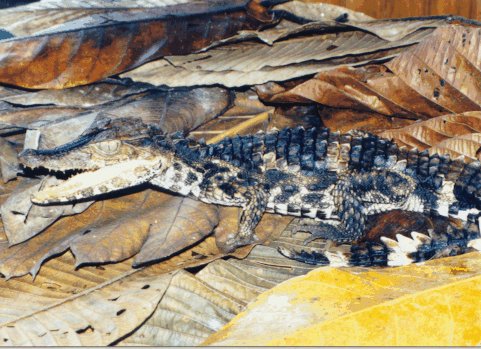Type the name of the breed you're looking for below
[wpdreams_ajaxsearchlite] Don't see the breed your're looking for? Click here and let us know!
Smooth-Fronted Caiman
| Place of Origin and Range | The Smooth-Fronted Caiman is native to the Amazon and Orinoco Basins in South America and is found in Bolivia, Brazil, Colombia, Ecuador, French Guiana, Guyana, Peru, Suriname, and Venezuela. |
| Description | The head of the Smooth-Fronted Caiman is similar in appearance to that of the spectacled Caiman, but no bony ridge or "spectacle" occurs between the eyes. The scutes on the back of the neck and the tail are large, triangular, and sharp. It has heavily ossified body armour on both its dorsal and ventral surfaces. The relatively short tail is broad at its base and flattened dorsoventrally in contrast to most species of crocodile which have laterally flattened tails. The bony scutes on the tail have sideways projections; and the tail is so well armoured, that it is relatively inflexible. This Caiman is a dark greyish-brown with mid-brown eyes. |
| Morph Patterns Available | Yes |
| Adult Size | Can grow up to 8 ft 6 in(2.6 m) |
| Accommodation | Although a 9 inch long hatchling can be maintained for a short time in a 20 gallon fish tank or larger aquarium. A filtered aquarium with water temperature at 70-80'F(21-26'C), and a sloping ramp(driftwood, textured plastic or some other non-abrasive surface) leading from the bottom to an illuminated and warmed basking spot. Approx 80'F(27'C). This species is an untrustworthy pet. |
| Lifespan | Can live 20+ years |
| Feeding / Diet | Caimans eat a variety of invertebrates such as insects, crustaceans, and mollusks. Larger Caimans eat fish and water snails. Older animals are capable of taking larger, mammalian prey (e.g. wild pigs). As conditions become drier, Caimans stop feeding. In areas where this species has become depleted, fish populations have also shown a decline. |
| Breeding | Females become mature and start to breed at about 11 years and males at about 20. The female builds a large mound nest out of leaf litter and soil at the end of the dry season or may use a pre-existing nest. A clutch of 10 to 15 eggs is laid and covered with further nesting material. Some heat is generated by the decaying vegetation and good insulation helps to retain this. The nests are often built against the sides of termite mounds and metabolic heat generated by the termites helps to maintain the clutch at a near constant temperature. The eggs need to be maintained at a temperature of 31 to 32°C (88 to 90°F) for the production of male offspring. The incubation period is about 115 days and the female Caiman remains near the nest for at least the earlier part of this time, providing protection against predators. During incubation, roots may grow through the nest, and soil from the termite mound may cement the eggs together. This means parental assistance is necessary when the eggs hatch to enable the hatchlings to escape from the nest chamber. Having transported the newly emerged juveniles to a nursery area, the female stays with them for a few weeks after which time they disperse. The female may miss a year before breeding again. |



